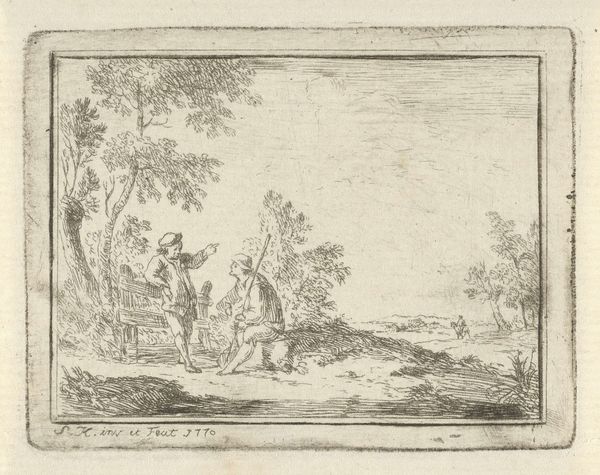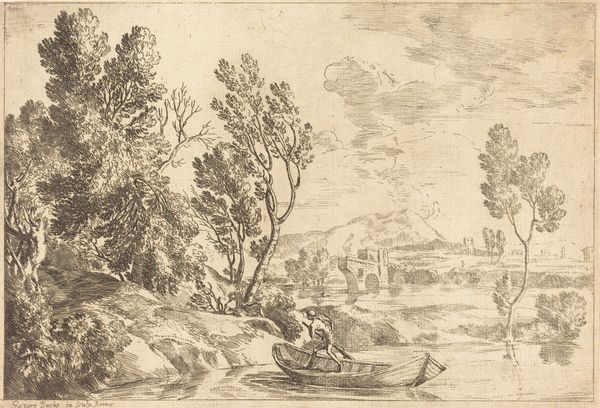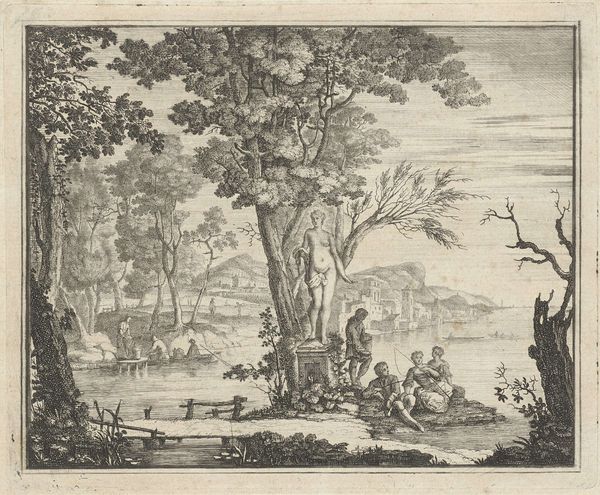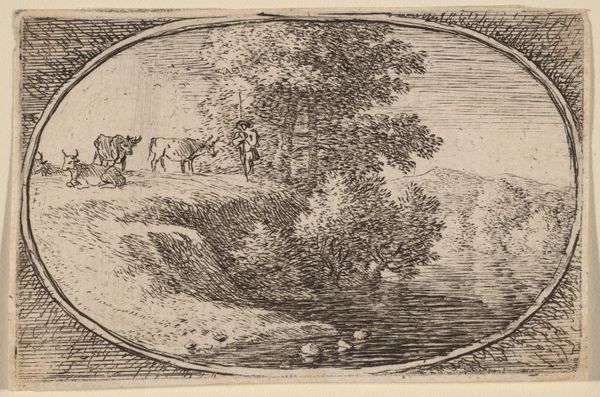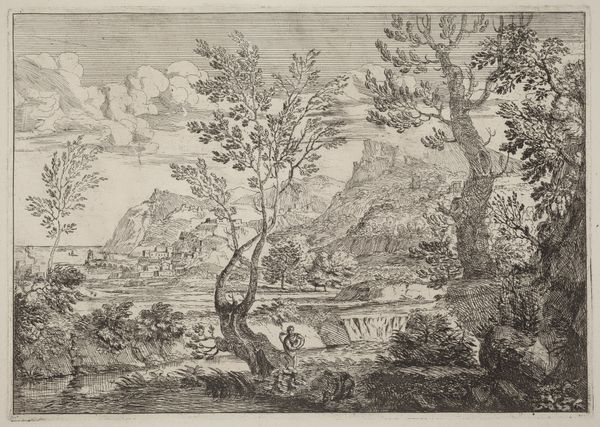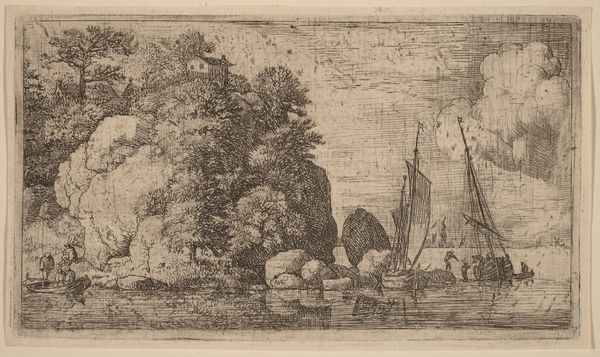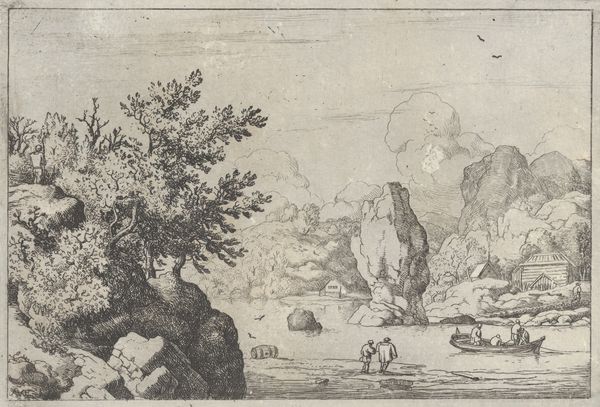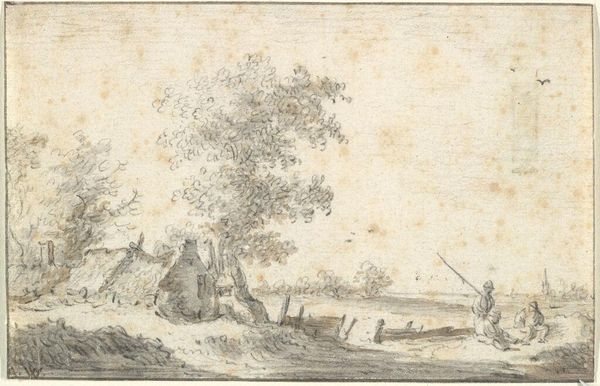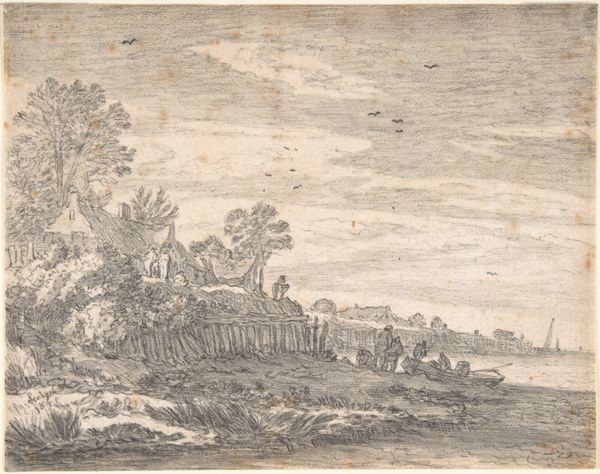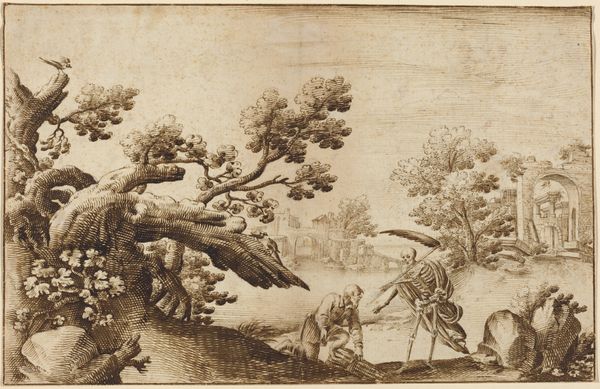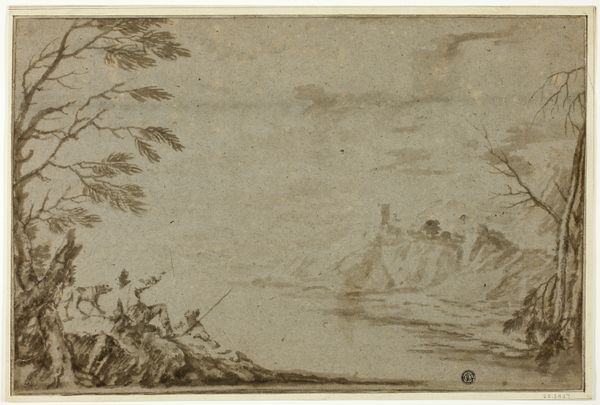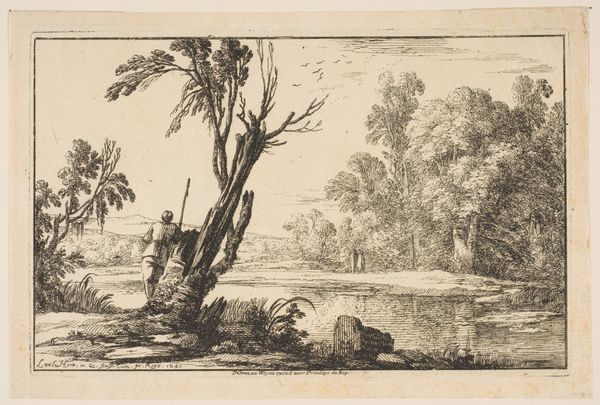
drawing, print, etching
#
drawing
#
baroque
# print
#
etching
#
landscape
#
genre-painting
Dimensions: height 68 mm, width 90 mm
Copyright: Rijks Museum: Open Domain
Curator: Welcome. Let's delve into this etching, “Eendenjacht,” or “Duck Hunt,” by Ercole Bazicaluva, created around 1620. The scene captures figures in a landscape, engaged in the activity suggested by the title. Editor: It's incredibly detailed for an etching of that period. There's a certain rustic quality that I appreciate, the contrast of light and dark emphasizing the roughness of the hunt. One wonders about its accessibility; it’s intriguing to consider its potential as a relatively reproducible artwork, compared to painting, perhaps circulated amongst a new buying market beyond wealthy elites. Curator: Absolutely, the reproducible nature of prints transformed art consumption, reaching broader audiences. What's compelling is how Bazicaluva employs etching to render not just the hunt but also the labor behind it: the crafting and the process. He skillfully uses line and tone to represent textures and forms that, one imagines, would have resonated within specific social stratifications during the time. Editor: And how these pursuits were, indeed, rigidly determined along class lines. Duck hunting may appear as just sport, but it's inseparable from broader ecological, social, and even philosophical conditions. You mentioned texture. Consider the socio-economic significance: while elites would have regarded hunting as leisurely, who performed the physical labor, how were the fowl and landscape exploited? Who had access, who did not? Curator: True, those aspects are vital to consider. We must ask: what type of copper was used? Were Bazicaluva’s materials sourced from within a localized network of trade, or farther beyond? His utilization of cross-hatching shows great labor for the period. What we interpret as landscape representation depended entirely on a complex chain of labor and material. Editor: And whose land exactly? As landscapes became commodified and 'picturesque,' there are colonial, capitalist processes happening on the very paper here, the assumed mastery over nature, control over populations both animal and human, made aesthetically pleasing for select gazes, leaving aside exploitation for profit or pleasure... Curator: Looking closer, we can examine the methods involved in print production— the specific papers chosen for printing, as well as the labor expended in these methods. From its production materials to social access of viewership. Editor: This gives a whole new dimension, considering labor within these works from 1620, bringing forth the context for current contemporary thought, the impact this small print embodies is more than meets the eye. Thanks to this view of how production shapes reception, as this print moves into our own moment.
Comments
No comments
Be the first to comment and join the conversation on the ultimate creative platform.
